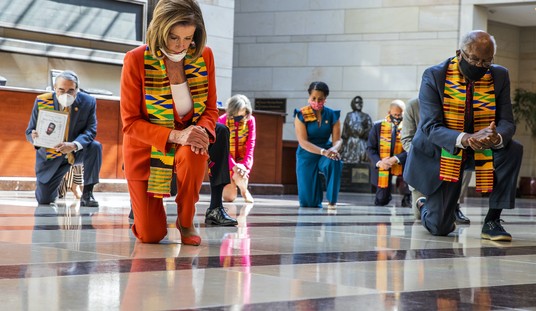I’m not entirely sure what prompted this conversation to crop up again, but Radley Balko took to the pages of the Wall Street Journal this week to express his concerns over The Rise of the Warrior Cop. His tale begins with a review of the story of Matthew David Stewart, a person who wound up in what was certainly a questionable case of police force employed during his arrest on charges of growing marijuana plants in his home. The encounter turned into a shootout where one police officer was killed, several more injured and Stewart himself was shot and injured. Stewart is no longer among the living – he hung himself in his jail cell – but the controversy continues. Balko uses this as a launching point to ask if the police have become too militarized.
The police tactics at issue in the Stewart case are no anomaly. Since the 1960s, in response to a range of perceived threats, law-enforcement agencies across the U.S., at every level of government, have been blurring the line between police officer and soldier. Driven by martial rhetoric and the availability of military-style equipment—from bayonets and M-16 rifles to armored personnel carriers—American police forces have often adopted a mind-set previously reserved for the battlefield. The war on drugs and, more recently, post-9/11 antiterrorism efforts have created a new figure on the U.S. scene: the warrior cop—armed to the teeth, ready to deal harshly with targeted wrongdoers, and a growing threat to familiar American liberties.
The acronym SWAT stands for Special Weapons and Tactics. Such police units are trained in methods similar to those used by the special forces in the military. They learn to break into homes with battering rams and to use incendiary devices called flashbang grenades, which are designed to blind and deafen anyone nearby. Their usual aim is to “clear” a building—that is, to remove any threats and distractions (including pets) and to subdue the occupants as quickly as possible.
I think most of us are familiar with the concept of SWAT teams which, as Balko notes, have been around since the 1960’s. And I wouldn’t argue that they certainly look military in nature when deployed for duty or training. This, of course, is by design and of necessity, given the missions they are assigned and the dangers they face. The author does give a slight nod to the need for heavily armed first responders in some situations at the close of the article, but also pines for the long gone era of the affable flatfoot walking his beat in Everytown, USA.
SWAT teams have their place, of course, but they should be saved for those relatively rare situations when police-initiated violence is the only hope to prevent the loss of life. They certainly have no place as modern-day vice squads.
Many longtime and retired law-enforcement officers have told me of their worry that the trend toward militarization is too far gone. Those who think there is still a chance at reform tend to embrace the idea of community policing, an approach that depends more on civil society than on brute force.
In this very different view of policing, cops walk beats, interact with citizens and consider themselves part of the neighborhoods they patrol—and therefore have a stake in those communities. It’s all about a baton-twirling “Officer Friendly” rather than a Taser-toting RoboCop.
It’s a lovely sentiment, but I fear there’s a fair bit of reality missing here. This is highlighted in the description of a theory of law enforcement which depends, “more on civil society than on brute force.” The problem here is the distinct lack of “civil” in society which crops up more often than we might care to admit. These types of frightening encounters are not happening solely in situations like massive riots as Balko describes. There was a recent conversation on one of the cable talk festivals dealing with the “hostile” nature of police, particularly as seen in some sort of “stop and frisk” encounter. Police pulling over a vehicle, exiting their squad car and approaching the driver are widely trained to unhook the clasp on their weapon holster, making it easier to access quickly should the need arise. This is apparently viewed as “hostile” by some observers, or at least as an assumption about the driver.
But as with all the other scenarios described in Balko’s article, what are officers supposed to do? Yes, we can hope that the vast majority of traffic stops will be of absent minded or harried drivers who are simply going too fast or failed to realize that their tail light was extinguished. But what of that one in I don’t know how many cases where the driver has a few pounds of heroin in the trunk, an outstanding arrest warrant and a gun? Paranoia leads them to assume that they’ve been found out and they preempt the approaching officer’s intended question about their insurance card with a high caliber blast through the window. It’s a bit late at that point to worry about how “friendly” the officer may have looked while approaching.
The Stewart case described in the article is another case where things not only turned out badly, but could have been even worse. When police are “invading” a home to arrest a suspect and seize contraband, it’s hardly an unreasonable assumption that the suspect may react violently in an attempt to defeat the police and escape. Stewart may have “thought” he was being invaded by other criminals, but it was his choice to grab a gun and start shooting. The result of the police response may have been regrettable, but it was hardly unexpected.
Do we need “kinder and gentler” cops interacting with the community in a friendly fashion? It is certainly to the benefit of the police to be in good standing with a cooperative community and to know the people they protect and serve, but they also deserve a fighting chance when the situation suddenly turns violent and ugly. The rise of “warrior cops” may not be what everyone would hope for, but I don’t see any realistic alternatives.








Join the conversation as a VIP Member